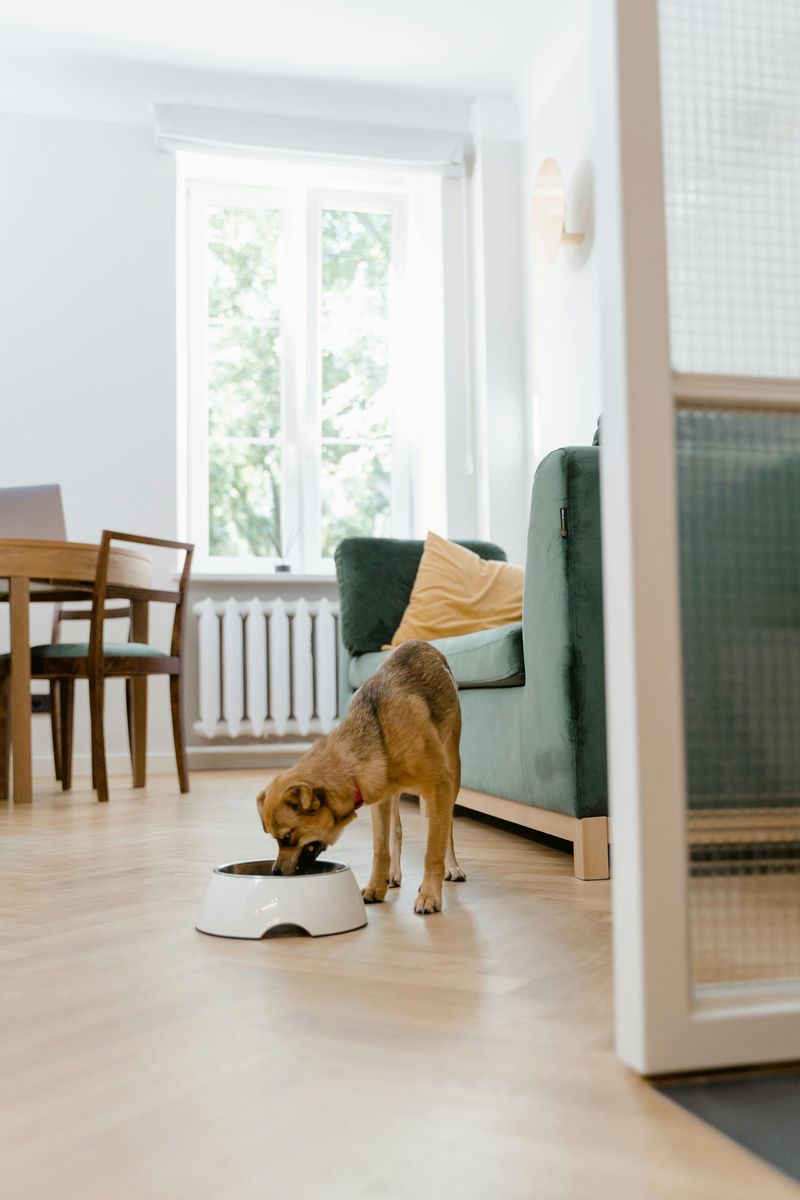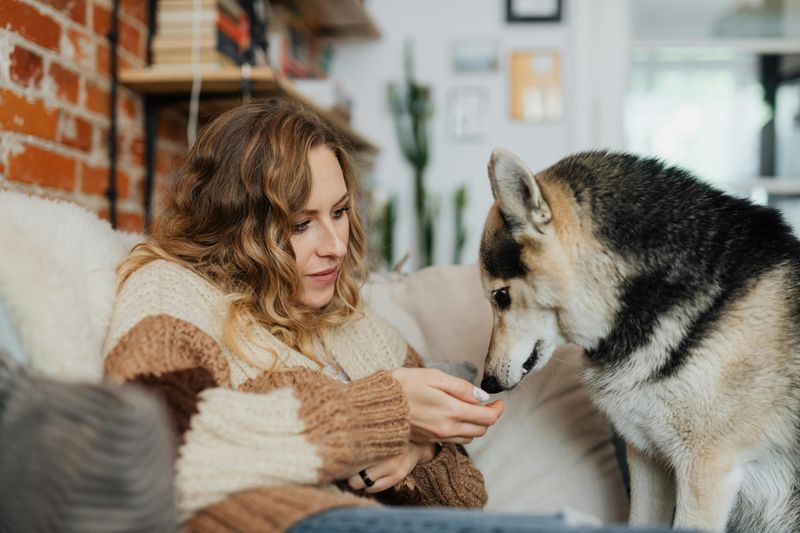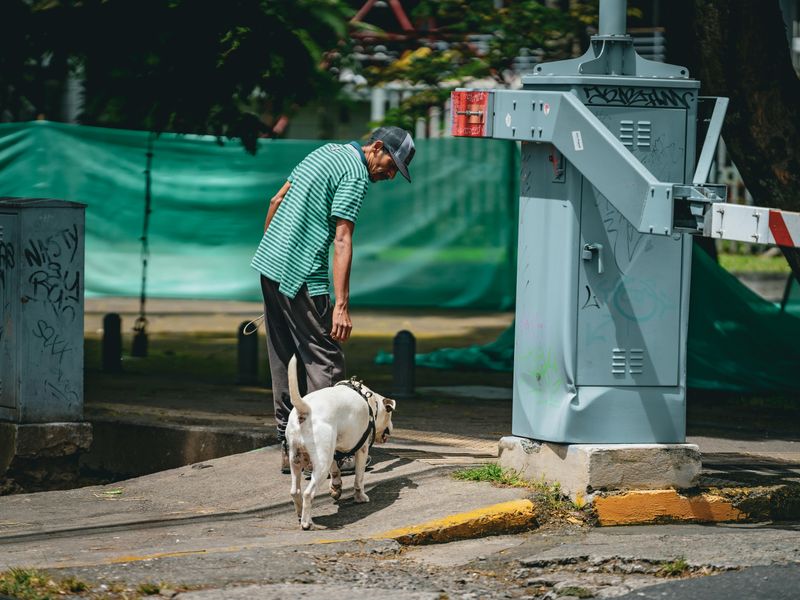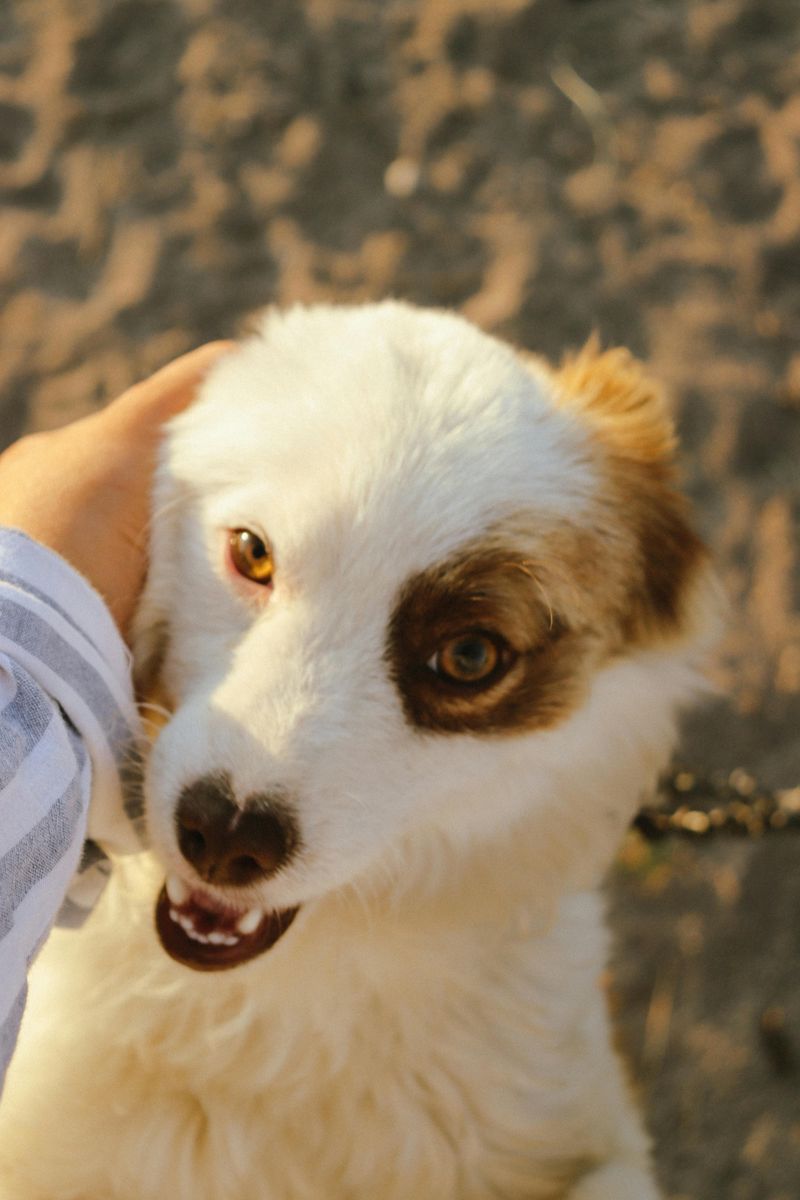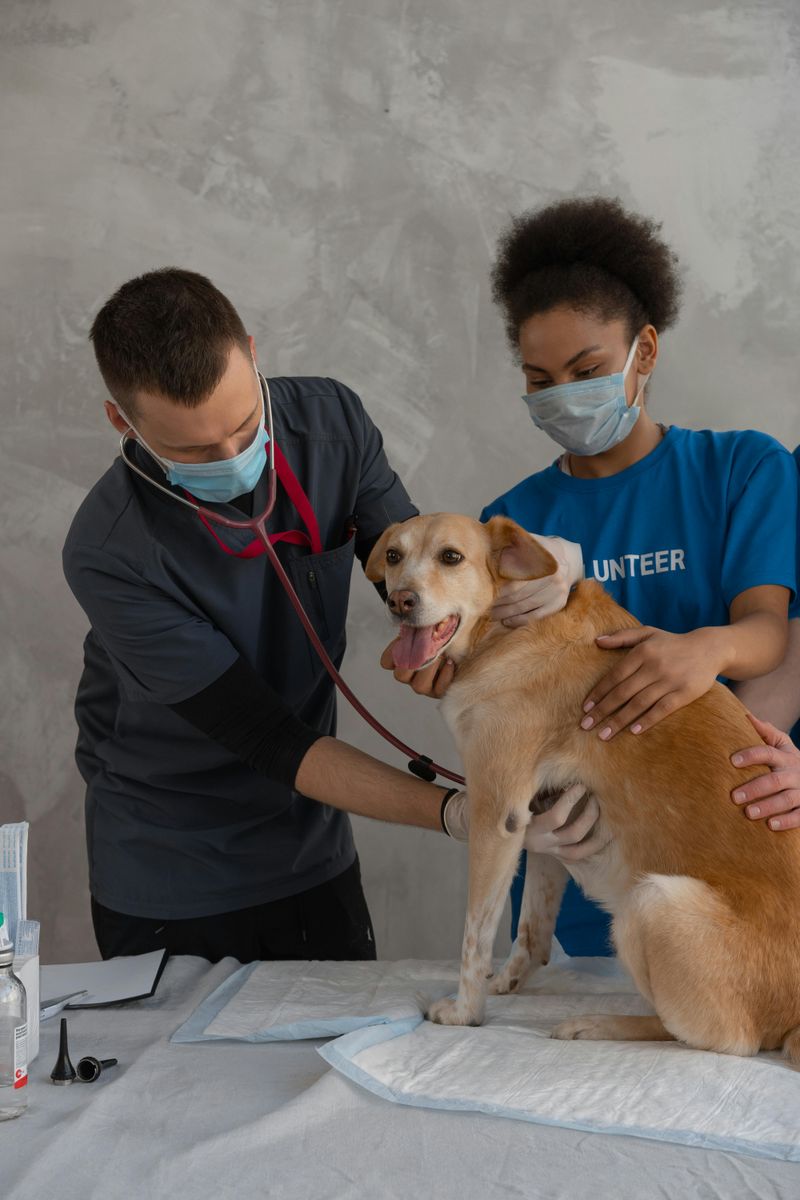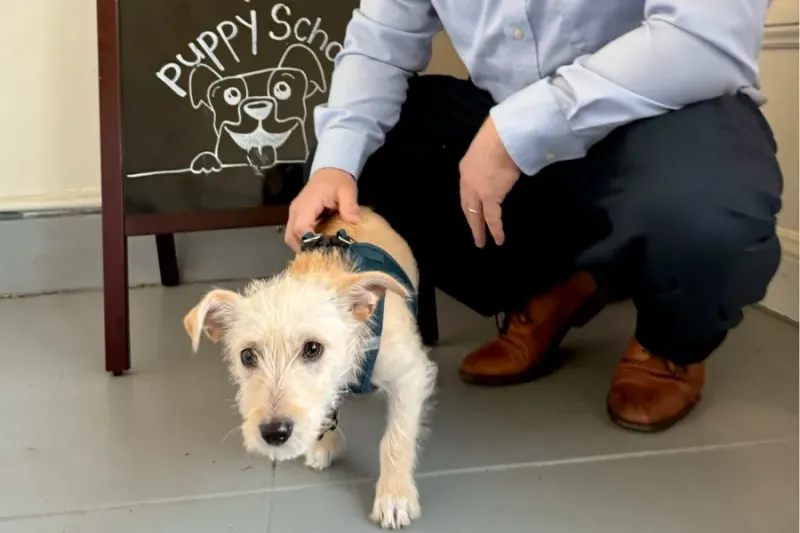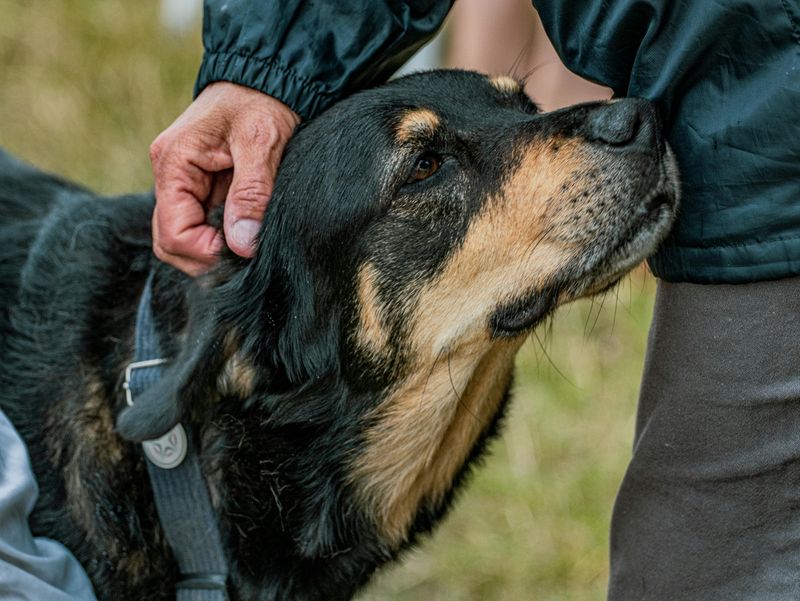Bringing a rescue dog into your home is a rewarding experience, but it requires patience and understanding. Here are 19 practical tips to help your new furry friend feel comfortable and secure in their new environment.
Give them space to explore at their own pace.
Imagine stepping into a brand-new world filled with unfamiliar scents and sights. Your rescue dog feels this way when entering your home. Allow them to wander and sniff around, exploring each corner without feeling rushed. This freedom helps them gradually map out their environment.
Create a comfortable atmosphere by ensuring the space is safe. Remove potential hazards like sharp objects or toxic plants. Letting them take control of their exploration builds confidence and eases anxiety, setting the stage for a trusting relationship.
Patience is key here, as each dog may take different times to adjust. Celebrate their courage and curiosity.
Maintain a consistent daily routine.
Dogs thrive on routine. Just like us, they find comfort in knowing what to expect each day. Establish a structured schedule for feeding, walks, and playtime to provide your rescue dog with a sense of stability.
This predictability reduces anxiety and helps them adapt to their new surroundings. Consistent routines also strengthen bonds as they learn to trust and rely on you.
Remember, consistency doesn’t mean rigidity. Allow room for flexibility, but keep core activities at regular intervals to foster a secure environment for your furry friend.
Create a quiet, safe spot for resting.
Imagine finding a peaceful corner that feels like a haven. Your rescue dog needs this sanctuary to unwind. Designate a quiet spot where they can retreat from the hustle and bustle of daily life.
Fill it with a comfortable bed or blanket, and perhaps a few soft toys. This personalized space signals that they have a safe haven to call their own.
Avoid high-traffic areas to ensure uninterrupted rest. Over time, this spot becomes a refuge, helping them feel secure and relaxed as they adapt to their new home.
Use positive reinforcement and patience.
Imagine the joy of being rewarded for every small success. Using positive reinforcement, like treats or praise, encourages your rescue dog’s good behavior.
Celebrating their achievements, no matter how small, boosts their confidence and strengthens your bond. Training should be a fun and engaging process that fosters trust.
Patience is essential. Some behaviors take time to develop, so remain calm and supportive as they learn. Over time, your encouragement will create a positive learning environment, helping them thrive.
Avoid overwhelming them with visitors.
Imagine suddenly being surrounded by strangers. It can be intimidating for a rescue dog. Limit visitors initially to allow your dog to settle in without feeling overwhelmed.
Gradually introduce them to new people in a controlled and calm manner. This approach reduces stress and helps them adjust to your home at their own pace.
Encourage guests to approach slowly, offering treats to create positive associations. By managing interactions carefully, you build your dog’s confidence and comfort around new faces.
Let them approach you first.
Have you ever felt the excitement of making the first move? Allow your rescue dog to take that initiative. Whether it’s a gentle nuzzle or an inquisitive tail wag, let them decide when to approach you.
This autonomy builds trust and respect in your relationship. Avoid overwhelming gestures or forced interactions that might create fear or anxiety.
By letting them choose the timing, you encourage a positive connection. This mutual respect lays a solid foundation for a strong, trusting bond.
Keep early interactions calm and short.
Imagine meeting someone new and experiencing prolonged interaction. It can be tiring. Keep initial interactions with your rescue dog calm and brief to prevent overstimulation.
Short, frequent engagements build familiarity without causing stress. This measured approach helps them acclimate to your presence and the new environment.
Gradually increase the duration as they become more comfortable, ensuring every interaction remains positive and stress-free. This strategy helps nurture trust and understanding over time.
Establish a feeding and walking schedule.
Consistent mealtimes and regular walks create a stable environment. Your rescue dog finds comfort in knowing when to expect food and exercise.
A fixed feeding schedule ensures they receive proper nutrition and reinforces routine, providing security. Regular walks offer physical exercise and mental stimulation.
These predictable activities help them feel assured in their new setting. Over time, structured scheduling supports behavioral adjustment and strengthens your bond.
Provide familiar toys or blankets.
Imagine the comfort of a familiar scent. Providing your rescue dog with toys or blankets they know can offer reassurance in their new environment.
These items carry scents that remind them of past comforts, helping ease anxiety. Integrating familiar objects into their surroundings encourages a smooth transition.
They serve as comforting anchors, reminding your dog of safety and warmth. This familiarity aids in reducing stress and promotes a sense of belonging.
Use gentle tones when speaking.
Imagine the soothing effect of a gentle voice. Dogs are sensitive to tone. Using calm and soothing tones when speaking to your rescue dog fosters a safe, reassuring environment.
This gentle communication style reduces anxiety and builds trust, making them feel cherished and understood. Avoid harsh or loud voices that may create fear.
Consistent soft-spoken interactions help establish a positive bond. Over time, this approach reinforces a nurturing and supportive relationship.
Avoid punishment or raised voices.
Imagine learning from mistakes with kindness. Avoid using punishment or raised voices, which can instill fear in your rescue dog.
Instead, guide them gently with positive reinforcement to correct unwanted behavior. Such an approach encourages learning without intimidation, fostering a trusting relationship.
Focus on rewarding desirable actions, reinforcing good habits. This nurturing method builds a positive, harmonious environment for both you and your dog.
Visit the vet for a health check and microchip update.
Ensuring your rescue dog’s health is paramount. Schedule a vet visit soon after their arrival for a comprehensive health check.
This examination ensures they’re in good health and identifies any underlying medical issues. It’s also the perfect time to update their microchip information, crucial for their safety.
A proactive health approach provides peace of mind and sets the stage for a healthy, happy life in their new home.
Introduce new family members slowly.
Imagine meeting a whole new family in one go. It can be overwhelming. Introduce your rescue dog to new family members gradually.
This paced approach allows them to form individual connections without feeling swamped. Encourage each family member to approach calmly, offering treats to create positive associations.
Building these relationships slowly fosters trust and comfort, ensuring your dog feels part of the family dynamic.
Use crate training for security (if appropriate).
Crate training, when done right, offers a secure environment. It becomes a den-like sanctuary where your rescue dog feels safe.
Introduce the crate as a positive space, never a punishment. Allow them to explore it on their own terms, associating it with comfort.
This method, tailored to their needs, helps manage anxiety and provides a retreat during overwhelming situations, fostering a sense of security.
Monitor for stress signs (panting, pacing).
Like us, dogs show stress in various ways. Monitor your rescue dog for signs such as panting, pacing, or whining. These behaviors may indicate anxiety or discomfort.
By observing closely, you can identify triggers and address them promptly. Understanding their stress cues allows you to tailor support and create a calming environment.
This attentiveness fosters a compassionate relationship and aids in their adjustment process, ensuring they feel understood and cared for.
Reward small progress consistently.
Celebrating every little victory encourages your rescue dog to continue progressing. Reward them consistently for small achievements, like sitting calmly or responding to a call.
Positive reinforcement builds their confidence, showing that their efforts are recognized and appreciated. This consistency strengthens your connection and encourages ongoing growth.
Over time, these small rewards accumulate, leading to significant behavioral advancements and a trusting bond between you and your dog.
Avoid sudden loud noises or chaos.
Imagine a serene environment suddenly disrupted by loud noises. It can be distressing for your rescue dog. Avoid exposing them to abrupt sounds or chaotic situations.
Keeping the environment calm helps reduce anxiety and fosters a peaceful atmosphere. Gradually introduce them to louder sounds, ensuring they feel safe.
This thoughtful approach supports their adjustment, making their new home a comforting and secure place to be.
Be patient — progress takes time.
The journey of adjustment is unique for every rescue dog. Patience is your greatest ally. Progress may seem slow, but each step forward is meaningful.
Celebrate small milestones, recognizing that trust takes time to build. Avoid rushing the process or setting unrealistic expectations.
Your understanding and patience create a supportive atmosphere, allowing your dog to adapt at their own pace. This compassionate approach fosters a strong, lasting bond.
Show affection gradually as trust builds.
Imagine the warmth of slowly forming trust. Show affection to your rescue dog gradually, allowing them to set the pace.
Start with gentle strokes or soothing words, observing their comfort levels. As their trust grows, you can increase affectionate gestures.
This gradual approach respects their boundaries, reinforcing a secure relationship. Your mindful affection helps them feel cherished and valued, ensuring a positive, trusting bond.


